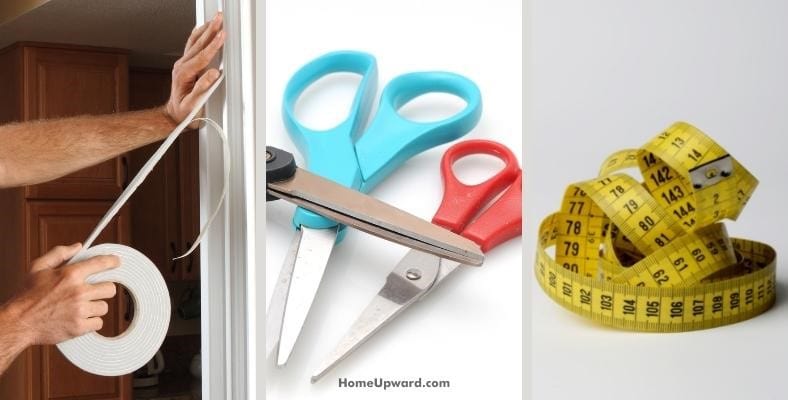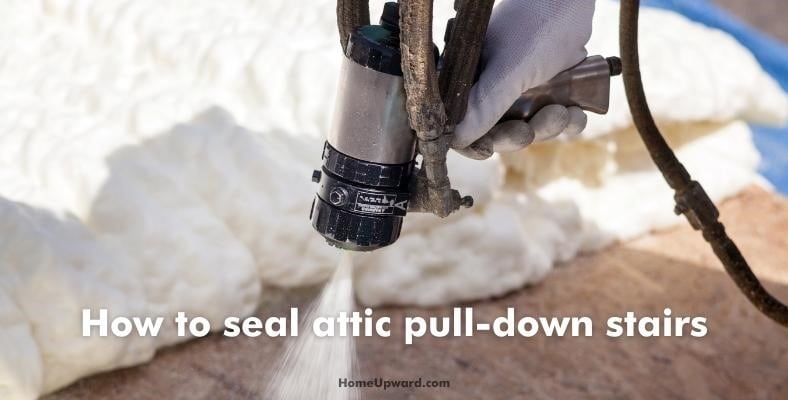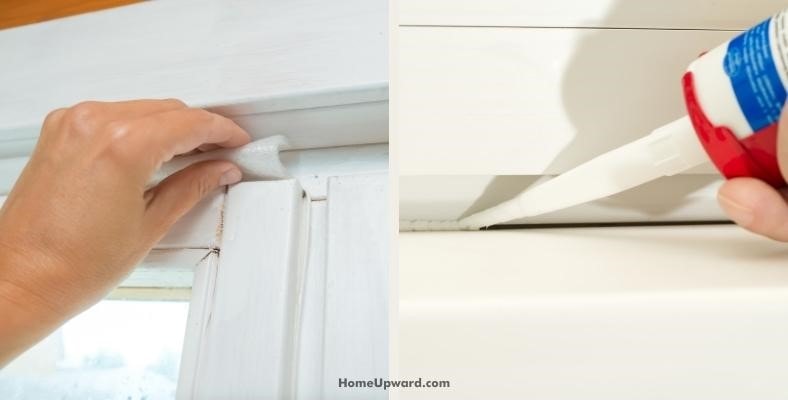Contents
How To Stop Drafts From an Attic Door
There are a few ways to stop drafts from coming in or out of an attic access door, such as checking vents, locking and caulking the windows in the attic, insulating the attic, and covering the attic door. It can take some trial and error though.
- One solution may be as simple as locking the windows in your attic. Unlocked windows can leak minute amounts of air, but those amounts can be a lot when left untreated. Even if the windows look closed and locked, always double-check them then check for gaps and drafts then go from there.
- Consider sealing them in place by caulking the windows. There are many different brands of caulks on the market, but the biggest factor in how effective they are is the application. Remove old and cracked caulk before applying a new coat, along with using a rag to wipe away dirt, dust, and cobwebs to ensure the caulk properly adheres to the surface.
- If the windows are properly sealed and the draft is still an issue try insulating your attic. A simple way to protect your attic is to use insulated fiberglass rolls or another contractor-approved insulation around the attic door as well as padded foam insulation strips (weather stripping).
Regardless of what needs to be done the most important thing is to be sure to seal off or block off gaps and misalignments around the door where air can get through.
Why Is Sealing an Attic Door Important?
Air leaking out of your attic can cause several problems including trouble keeping the rest of the house air-conditioned.
- Excessive energy loss from air leakage can directly correlate to higher electric bills, especially if you run the air conditioner or heater to cool or warm your home more than usual.
- Pests can move through gaps and get into other parts of your home from the attic that way.
- Odors, dust, and other little issues can get into your living areas that way as well.
- Moisture from attic condensation or a leak can drip from the attic door if not sealed well.
The first step is to investigate the attic and check the windows for a good seal along with the type of insulation used in the attic. If you want a lower energy bill making sure the attic access door is properly sealed is critical.
How To Seal Attic Door or Attic Hatch
Before you seal an attic door or hatch, remove any old weatherstripping or foam that’s damaged or dried out. Clean the area for dust and debris and make sure you have all the required materials you need:
- Self-adhesive weatherstripping
- Scissors
- Nails and hammer or glue
- Tape measure
- Preferred insulation or foam board
Steps for sealing your attic door or hatch
- Using the tape measure, measure around the attic door opening to determine the length of weatherstripping required.
- Cut the strip to fit along the edge with scissors, peel off the backing of the adhesive and add it to all four sides, ensuring a snug fit.
- After replacing or adding new weatherstripping to the attic door, add a pre-cut sheet of insulation or a foam board to the back of the attic hatch to ensure extra protection from air drafts and leaks. Adding a foam layer to the loft hatch will reduce air leakage from attic drafts.
Alternative Ways To Seal a Drafty Attic Door
Other ways to stop drafts from an attic door include:
- Adding spray foam around the edges where there are leaks.
- You can buy an attic door cover from your local hardware or home goods store.
- Using adhesive-backed foam weatherstripping where the door meets the nearby frame or doorway. Foam weatherstripping is highly compressible and easy to use, meaning it can be used on both sides if needed for a great seal.
How To Seal Attic Pull-Down Stairs
If you have pull-down stairs that lead to your attic, you’ll need extra insulation to ensure no air leaks from the opening. Building a wooden or foam one-sided box covering the attic access and pull-down stairs is a good way to be sure hot air doesn’t leak out.
Whatever material you decide to use, it needs to have enough weight to keep the weatherstripping down so that little to no air can get through.
Alternative Ways to Seal Attic Stairs
If you don’t want to build an insulated box yourself, there are pre-made kits or already-assembled boxes you can purchase to make the job easier. Otherwise you can remove the stairs and replace them with a simple hatch then insulate it with spray foam and weatherstripping.
Is Air Sealing the Attic Worth It?
Air sealing an attic can definitely reduce energy costs and help with maintaining your home’s overall air quality and comfort for years to come.
- If your attic goes unsealed for lengthy periods that hot air can seep into the rest of the house including living areas that you want to keep cool in the warm summer months.
- On the flip side, during winter that same warm air will leak out of the attic to the outside of your home where it will dissipate.
Similar to other energy efficiency work you can do, the savings are long-term and will add up over time. Even a 5 to 10% improvement in energy savings is a lot of money over several years!
How Much Does It Cost to Seal an Attic?
The current rate for professional sealing and insulating attic space can cost anywhere from $1000 to almost $5000. Despite the hefty price tag, the cost of sealing up your attic will ultimately be worth it as it will cut down on your energy bills.
It’s easy enough work (for the most part) which means you can do it yourself for a few hundred dollars at the most in many cases. Parts and supplies are typically below $200 depending.
How Often Should Attic Insulation Be Replaced?
Insulation is constructed from either natural or synthetic materials, but some brands are a blend of both.
- Synthetic materials can last for decades if properly installed while natural materials degrade much quicker.
- Fiberglass insulation contains some natural materials that become less effective over time, so it’s best to replace this type of insulation every 15 to 20 years. That’s especially important if you have had any water damage or a roof leak – any damaged insulation will be needed to be replaced when it’s found to be wet and ruined.
- Spray foam insulation is composed of various synthetic materials including polymer and polyurethane and has a much longer lifespan. Other than fire damage or severe ruptures to the insulation, spray foam may never need to be replaced.
While you’re at it, it’s a great time to consider adding a radiant barrier to help reduce cooling costs due to heat from the sun and outdoors.






